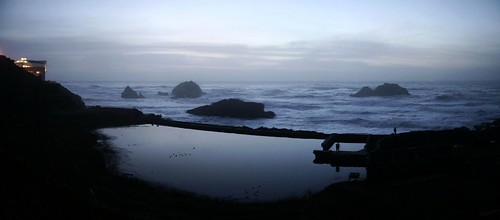California’s 19th century wave and tidal power inventions
Posted by Big Gav in tidal power
The FT has a post on a Californian tidal power project from the 19th century - California’s 19th century wave and tidal power inventions.
Wave and tidal power is today seen as a relatively immature energy technology compared with more established renewables, such as wind turbines and photovoltaic solar panels. But a San Franciscan local historical society has charted a much longer history for attempts to harness wave and tidal power.
Most of these attempts were unsucccessful, but they remain fascinating - especially considering that this spate of inventions and projects took place during what was a formative time for the oil industry. The Western Neighborhoods Project lovingly details numerous Californian projects dating back to the 1870s, when several inventions for wave and tidal powered motors were patented. Early efforts were mostly aimed at pumping water for purposes such as flushing sewers, but as early as 1881 an inventor planned to design a motor that could be used for “”public and private baths in this city, watering streets, flushing sewers, generating compressed air for driving machinery, also electric energy for illuminating the streets, etc. together with the last and most important purpose of extinguishing fires”. None of the projects chronicled succeeded in generating electricity. However a huge bathhouse or natatorium, the Sutro Baths, which opened in 1896. It was an expansion of an aquarium built by one Adolph Sutro, which was deemed the first Californian tidal energy projects, while the Sutro Baths are, according to this report, the state’s largest and most successful project to date.The largest of the swimming tanks was an L-shaped tank 275 feet long by 150 feet wide. The canalworks of the Aquarium filled them with 1,800,000 gallons of ocean water which was heated to various temperatures by a device invented by Sutro. To fill the tanks by the power of the tides took one hour. During the times of the year when the tide was too low to be effective, a pumping system was used that took five hours to fill the tanks.
The baths were apparently popular but were not soundly managed after Sutro’s death and the City of San Francisco repeatedly turned down offers to buy them. In 1966 the building was closed and it burnt down later that year, leaving cement foundations which are now part of the Golden Gate National Recreation Area.
You can read the whole of the report, including illustrations and photos here. Wired journalist Alexis Madrigal has also checked out some archived reports of such machines in the course of writing a book about the history of clean technology in the US.






